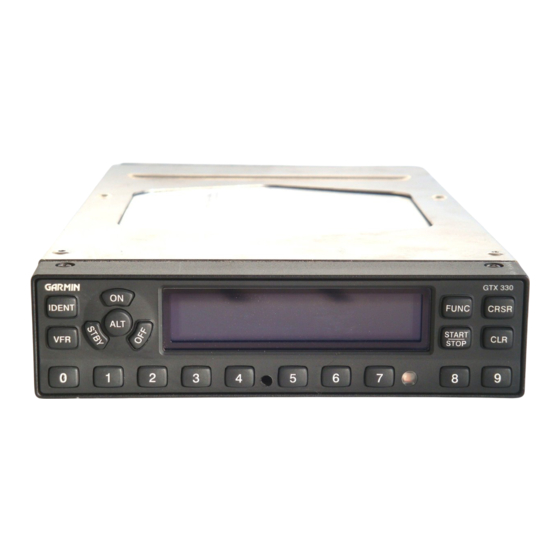NOTE: If the entered Flight ID is blank (i.e. all spaces), the new Flight ID
will not be saved by the GTX 330 and the dialog will remain open.
If an error is made while entering a Flight ID, press the CLR key to back up to any point.
If the CLR key is pressed when the cursor is covering the first Flight ID character, the Flight
ID will revert to the last Flight ID entered, and the dialog will remain open. If the CLR key is
pressed when the Flight ID is not being edited, the dialog will close without saving.
When the transponder Flight ID is changed, a notification is sent to ATC by the GTX
330. This notification is temporary and will not be sent if the GTX 330 is inactive (i.e., set to
STBY).
NOTE: For dual transponder installations, change the Flight ID on the
active transponder. This ensures the notification is transmitted to ATC.
NOTE: The GTX 330 must be set to ON or ALT during a Flight ID change
in order for ATC to be notified of the change.
Resetting the Flight ID to Default
If a default Flight ID is configured, the Flight ID Entry dialog will display an option in the
lower right corner of the screen "8=<DEFAULT>", where <DEFAULT> is the configured default
Flight ID. Press the 8 key to reset the Flight ID to this default and close the dialog. If a default
Flight ID is required but is not configured, contact a Garmin authorized service center for GTX
330 configuration.
GTX 330 Mode S Transponder Features
GTX 330D Diversity Mode S Transponder
The GTX 330D Diversity Mode S Transponder incorporates antennas mounted on the
top and bottom of the aircraft for dependable operation while maneuvering. Top and
bottom antennas are less prone to antenna shadowing by the aircraft structure while turning.
A top mounted antenna is in a better viewing position for interrogation and reply to overhead
aircraft.

